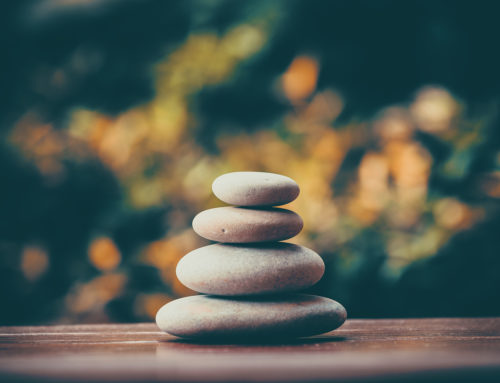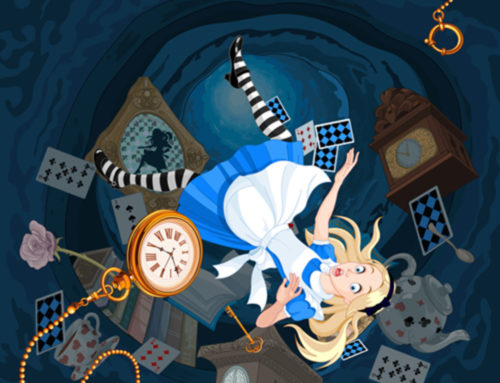
Marie Kondo, “tidying expert,” best selling author, founder of KonMari Media Inc. and, most recently, star of Netflix’s hit show, “Tidying Up With Marie Kondo,” has made millions of dollars, changed thousands upon thousands of lives and considerably transformed how people think about cleaning up, clearing out and reorganizing their homes. And, she’s done all this—and more—around the simple concept of choosing joy. Her well received and widely practiced philosophy is beautifully straightforward: Transform a cluttered home into a space of serenity and inspiration by decluttering by category rather than location—think start with clothes then move to books, papers, etc.—and only keep those things that speak to the heart and spark joy.
I love her mindful approach to decluttering, and have thought about it often—especially lately now that spring has sprung and people all over the country are beginning to clean out dust, drawers and all that random stuff that somehow finds its way into closets and corners during the winter months.
As a psychologist and coach with an emphasis on mindfulness, Marie Kondo’s simple concepts resonated with me on a deeper, more internal level. As her widely popular approach suggests, people are invested in decluttering their physical spaces, but what about applying those same concepts to clean up and clear out stagnant thoughts? I started thinking about how the Marie Kondo approach to decluttering physical spaces could be applied in very much the same ways to help us declutter our busy, crowded and often anxious minds.
Clear Your Mind: Taking Stalk of Your Mental Hygiene
Have you ever spent a day, hour or even a minute simply noticing the internal dialogue constantly going on in the back of your mind? Most of us run internal scripts without even realizing it and allow our attention to fall into one rabbit hole after another without being cognizant of our running thought patterns or pausing to be fully present with either our internal or external experience. And, like homes that continue to collect clutter, our minds become bogged down in thought patterns that create feelings of overwhelm rather than joy.
Much like Marie Kondo talks about decluttering physical items by category, the same idea can be applied to patterns of thought. Essentially, our focus can be disrupted by internal thoughts, which are those unproductive scripts that run endlessly on repeat throughout our minds, and external distractions that dominate our attention, and thus hijack our thoughts. More on external distractions to come in Part Two of this blog series. For now, let’s focus on some common categories of internal scripts that run through many—if not most—of our minds.
Common Scripts of The Mind
Like clothing or papers, patterns of internal thoughts can be categorized. Here are a few common ones to consider.
Disaster-bating: A client who noticed her proclivity to always imagine worst-case scenarios recently brought this term up in a session. This is the script in which you repeatedly imagine the future in a totally disastrous and unproductive way. It fuels stress hormones, adds to anxiety, and colors what you expect to experience in the world in a pretty harsh way. And, the kicker is that almost all of the things we disaster-bate about never happen!
Worst coach ever: This is where that inner critic really comes out to feast. Internally directed thoughts such as, “You’re a terrible person. You’ll never succeed. You’re too stupid. You’re too fat. You’re too (add your own insert here—we all have these),” dominate our internal thinking landscape, thwarting our ability to move forward with joy and causing our self-esteem to take a nosedive.
Rerun thinking: As the term suggests, in this category of thinking there is an incessant focus on replaying all the things that we could have or should have done differently. Rather than focus on our greatest hits, which we all have plenty of, there’s a proclivity to replay life’s most horrible moments, which tends to evoke shame and hopelessness.
Do any of these sound familiar to you? If so, you’re far from alone. We all have categories of thinking that clutter our minds, and rather than feel joyous, inspired and forward-moving, we feel anxious, stuck and depressed.
How Tidy Are Your Internal Thoughts?
What occupies most of your attention throughout the day? If you really want to clear your mind, drop in and see what you can learn. We create mental grooves, whether we’re aware of them or not, and clutter usually comes in when we’re on autopilot, which for most of us is most of the time. We unconsciously create habits, which we return to over and over again (they’re habits, right?). The good news is that with a mindfulness approach, new habits can be created.
As you spend some time over the next day, week, month or spring season noticing your thoughts—and try to do so with curiosity and as little judgment as possible—I invite you to ask yourself these questions.
What is the emotional impact of engaging in this line of thinking? Does it bring me joy? Or pain?
Does this serve my best self?
Is this worth my attention?
What kinds of thinking can I graciously let go of?
How do I want to show up in the world?
How do I want to feel?
What seeds of thought can I plant today to bring about more freedom, ease and happiness in my life tomorrow?
Make Your Mind A Space Of Serenity, Inspiration And Joy
The practice of mindfulness and noticing thoughts is simple, but don’t confuse simple with easy. Much like totally cleaning out and reorganizing your home, mindful mental spring cleaning takes time, patience and desire. And, it’s an ongoing process. Life will trigger you and distract you, but every time you clear up the clutter, you create more space and foster new ways of thinking. Like Marie Kondo suggests, it can be done with joy, and the process of letting go can be done with a sweet sense of gratitude.
Once you get used to noticing the scripts of your mind and are actively working to clear your mind, the next part of the mental decluttering process is to spend time noticing where your attention goes. This, for most of us these days, is into our laptops, smartphones and other devices. Look out for my next blog on mindful ways to manage your smartphone, which can help you spring clean your technology use Marie Kondo style and take more control over one of your greatest commodities—your attention.

Samara Vachss Serotkin, Psy.D. is a mindfulness-based psychologist and coach, as well as a mother and wife, based in Seattle, USA. She blogs regularly at focusandthrive.com, is a contributor at the Huffington Post, and is the author of two upcoming books.





